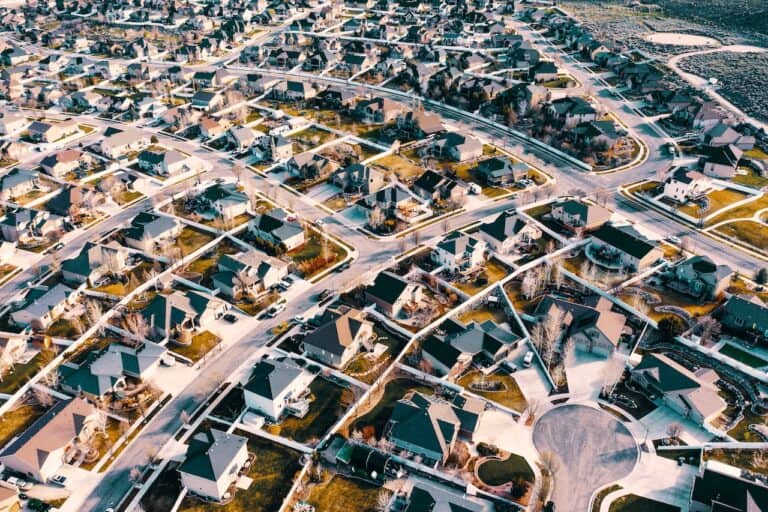
When the tweet, “The Airbnbust is upon us”, hit social media last October, the short-term rental doom-and-gloom started. The viral tweet sparked a tsunami of complaints from across the U.S., many of them Airbnb hosts whining about an occupancy drop-off. Mainstream media picked it up, and BiggerPockets posted an article entitled, “Airbnbust: The Fall of Short-term Rentals”.
But is the statement valid?
In this post, we’re going to see if the “bust” is really a thing, or just hype and speculation amplified by social media.
And we’re going to back up our assessment with some serious data.
The Airbnbust tweet caused such a stir that the term “Airbnbust” even made it to Urbandictionary.com, which defines it as:
But data from October last year – the same month as the Tweet itself – shows that short-term rental occupancy rate in the U.S. dipped to only 56.6%. That’s a miniscule 1.9% drop from the same period in 2021. And it still exceeds the levels seen in 2020 and 2019.
In fact, occupancy was up by 13% compared to 2019 levels.
And the good news is, the need for short-term rentals is also up. In the third quarter of 2022, demand for short-term rentals was at 24% growth year-over-year. This shows that more and more people are wanting to stay at an Airbnb.
AirDNA even said demand is expecxted to grow further by 9 percent this year.
It’s true that a lot of hosts have seen a substantial drop in bookings and revenues last year. In some areas, property owners saw zero bookings for a few months.
According to AirDNA, occupancy rates fell by 9.9% year-over-year in the middle of 2022.
So what’s causing their slump?
Well, we all know that the pandemic years of 2020 and 2021 were bumper years for the short-term rental industry. More travelers favored Airbnb over traditional hotels for various reasons – privacy, physical distancing, work-ation, etc. They also started going to more and more rural and remote destinations.
But things are returning to normal now. Travel restrictions have been lifted, people are heading back to the cities, and more people are flying internationally again. And there is an economic slowdown.
Here are the other factors causing the dip in occupancies:
What experts agree on as the number-one cause of the decline, though, is oversupply. That’s right, there are too many Airbnbs already.
In 2020 and 2021, lots of newcomers rushed to the short-term renting goldmine. Wealthy folks with second or multiple homes decided to rent their properties short-term.
Casual and professional investors, iffy about the stock market, decided to pull out and turn to safer investments – which is obviously real estate.
And because mortgage rates were record-low and housing values were going up, lots of everyday folks with a bit of saving – and additional income from Covid stimulus checks – decided to jump in, too.
Not to be left behind, many traditional long-term landlords decided to shift to short-term, hoping to cash in as well.
The result?
Late last year, the supply of available STR listings surged to 1.37 million in the US. That’s a 23.3% increase from 2019 levels. And despite higher interest rates and decreasing home values lately, more than 66,000 new STRs were added in October.
According to AirDNA’s VP for Research Jamie Lane, an overwhelming 62% of U.S. listings have been added to Airbnb since 2020. Imagine that!

So what can we expect from such an oversupply? Increased competition, of course.
In fact, analysts are expecting occupancies to continue to dip this year because even though demand is up for Airbnb stays, the bookings will just be spread out among so many listings. This means there are going to be fewer bookings for every property.
So are all STR hosts and property owners in trouble? Of course not.
It really depends on the market you’re in. As we in this business know, it’s all about “location, location, location”!
Always think about the supply-and-demand dynamics in your area, because occupancy will fall wherever supply supersedes the demand.
That’s what happened in the third quarter of 2022 in the top 50 U.S. markets – except coastal resorts and ski destinations.
Folks with properties in places like Telluride, Aspen, Vail, and Breckenridge, Colorado didn’t have any problems with vacancies. Neither did hosts in Destin and Walton Beach, Florida, South Padre Island in Texas, and Outer Banks in North Carolina.
In the midst of seemingly conflicting information, it’s important that we don’t get swayed by anecdotal data. Let’s take a look at what’s happening at the macro level.
As of 2022, there were over 4 million hosts on Airbnb and 7 million listings worldwide.
In the U.S., available listings reached 1.38 million. That’s up 23.2 percent year-over-year and an 8.7 percent increase from 2019 figures.
Some 14,000 new hosts were joining the platform each month last year.
But don’t worry. Analsts say the supply growth will taper off as mortgage and interest rates rise and cap rates fall. Fewer and fewer investors will put their money into short-term rentals over the long term.
As early as the second quarter of 2022, Airbnb already broke its booking record when it saw 103.7 million stays – including Experiences.
By the third quarter of the year, the number of booked Nights and Experiences rose 25% from the same time in 2021 to nearly 100 million.
Worldwide, guest arrivals exceeded 90 million – which is another record for the platform.
Airbnb’s revenues have been breaking records, too. In the third quarter of 2022, the company’s revenue grew 29% year-over-year to $2.9 billion — its highest quarter in all its history.
Consequently, profit was at an all-time high. Their net income was reported at $1.2 billion, up 46% from 2021.
AirDNA says the vacation rental space enjoyed “unprecedented popularity” since the Covid-19 pandemic.
But even after travel restrictions were lifted, demand for short-term rental stays continued to grow. In 2022, demand rose 24% year-on-year and sits at 26.6% higher than it was in 2019.
Nights booked for future travel were up 19.3% year-on-year to 15.8 million.
As mentioned earlier, the STR industry saw a gold rush during the pandemic. While hotel occupancy fell 77% at the end of March 2020 compared with 2019, short-term rental bookings dipped only 45% to 46%.
By August of that year, Airbnb properties were already in recovery mode. By contrast, it was only in 2021 and 2022 that hotels started to recover. And they haven’t even fully recovered at this time.
Right now, according to one report, STRs are seeing a 96% increase in occupancy compared to 2019 levels. But hotels are seeing a drop. And that’s according to a hotel industry source.
In terms of market size, Airbnb hovers at around $4.81 billion in revenue. The global hotel industry has $600 billion. That may look like a huge difference, but it’s hard to compare because Airbnb listings aren’t created equal. Some are just shared rooms that aren’t always available, while others are entire homes or villas rented year-round.
It’s like comparing apples to oranges. But both are fruits after all, so while we’re at it, let’s compare their potential for growth in the coming year.
The forecast for hotel demand this year is 3% growth, with a possible recession already factored in. Demand for Airbnbs, however, is projected at 9%.
That’s quite a difference.
Airbnb, as a corporation, sees no bust. CEO and co-founder Brian Chesky remains optimistic and is even encouraging more hosts to join the platform.
But what do neutral observers think?
Industry analysts say the short-term rental industry is a very resilient industry. It’s able to weather economic, social, and political uncertainty, just like it did during the pandemic.
While the occupancy forecast for 2023 is predicted to continue to dip to 56.4%, that’s still significantly higher than pre-pandemic levels.
AirDNA says if there’s going to be a recession, it’s going to be more of a “goods recession”, not a “travel and hospitality recession”. People are and will still be prioritizing travel over other forms of spending. Accommodation will be one of the least affected industries.
But expect competition to be tough. Many hosts and owners will probably rethink short-term renting, and they’ll either shift to medium-term or long-term. Others will realize Airbnb investing isn’t for them. (It’s hard work, after all.) And they’ll likely sell off their properties.
In that case, the business will go to those who remain. And the ones who remain will be those that stand out – providing excellent service, unique sites and accommodations, and the best value.
So the glory days are over. But even though the “Airbnboom” is coming to an end, there are still ways to make money with short-term rentals. Especially if you’re a smart and experienced investor.
Keep in mind that the market is oversaturated, though, so you might not be able to make as much profit as you want. Or as much as you did in the past 2 years.
But you can still face the year with optimism. Cautious optimism.
Watch the economy and pay attention to supply and demand. Study local market data. And find ways to add more value to your listings.
If that means adding simple amenities like free hair conditioners and brewed coffee, so be it. If it means costly upgrades like a hot tub, a piano, or a gym – even a pickleball court – then go the distance!
When competition is tough, we go the extra 2 miles to win the game!
Read also: 11 Ways to Beat the “Airbnbust” and Boost Your Bookings Quickly

Ready to learn how we built and operate a $2M/year short-term rental business, operate properties throughout the USA remotely, and acquired 70+ properties without owning any in just 2 years? Attend our free online master class to learn howyou can do the same. Click here.